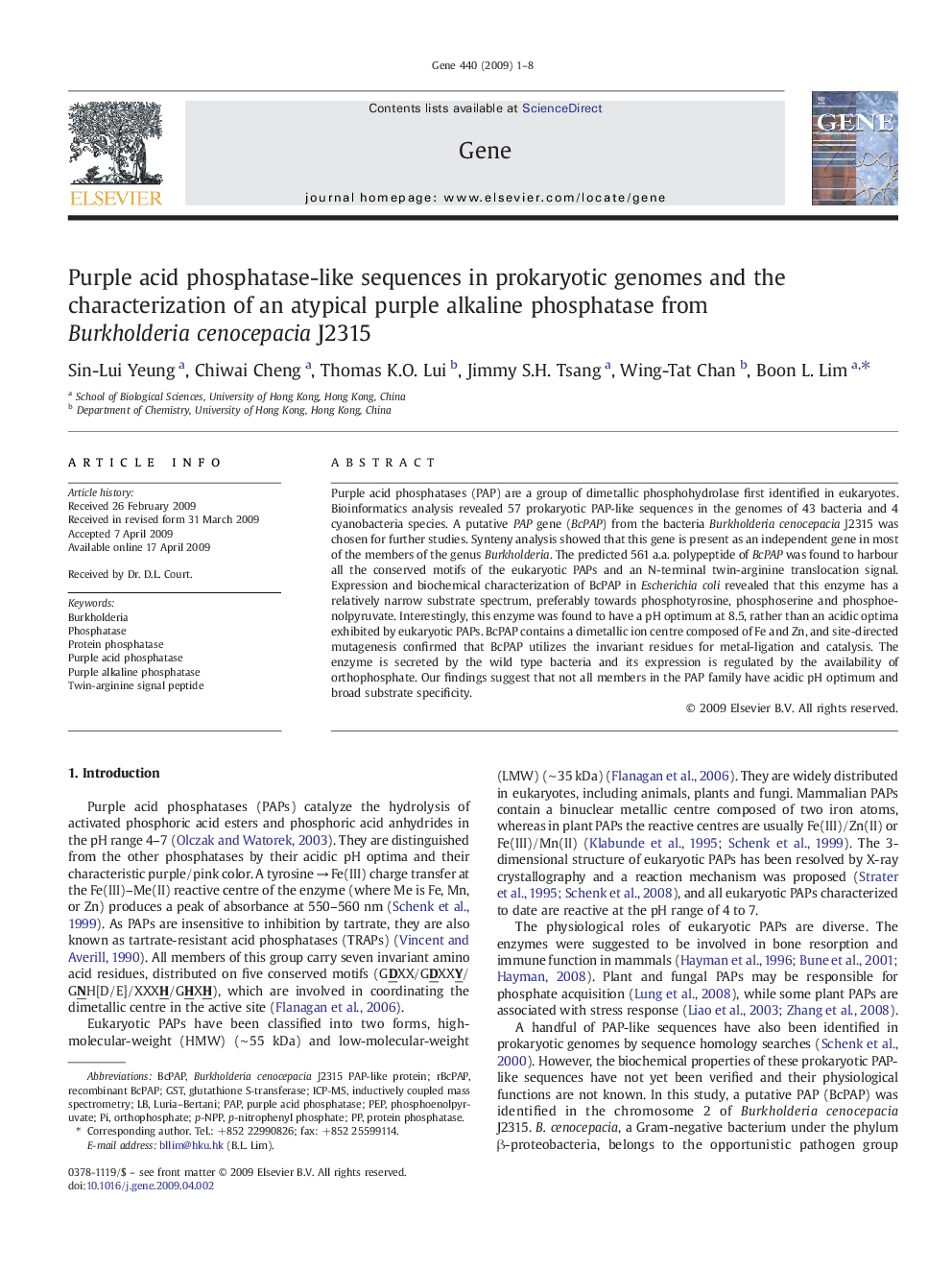| کد مقاله | کد نشریه | سال انتشار | مقاله انگلیسی | نسخه تمام متن |
|---|---|---|---|---|
| 2818870 | 1569891 | 2009 | 8 صفحه PDF | دانلود رایگان |

Purple acid phosphatases (PAP) are a group of dimetallic phosphohydrolase first identified in eukaryotes. Bioinformatics analysis revealed 57 prokaryotic PAP-like sequences in the genomes of 43 bacteria and 4 cyanobacteria species. A putative PAP gene (BcPAP) from the bacteria Burkholderia cenocepacia J2315 was chosen for further studies. Synteny analysis showed that this gene is present as an independent gene in most of the members of the genus Burkholderia. The predicted 561 a.a. polypeptide of BcPAP was found to harbour all the conserved motifs of the eukaryotic PAPs and an N-terminal twin-arginine translocation signal. Expression and biochemical characterization of BcPAP in Escherichia coli revealed that this enzyme has a relatively narrow substrate spectrum, preferably towards phosphotyrosine, phosphoserine and phosphoenolpyruvate. Interestingly, this enzyme was found to have a pH optimum at 8.5, rather than an acidic optima exhibited by eukaryotic PAPs. BcPAP contains a dimetallic ion centre composed of Fe and Zn, and site-directed mutagenesis confirmed that BcPAP utilizes the invariant residues for metal-ligation and catalysis. The enzyme is secreted by the wild type bacteria and its expression is regulated by the availability of orthophosphate. Our findings suggest that not all members in the PAP family have acidic pH optimum and broad substrate specificity.
Journal: Gene - Volume 440, Issues 1–2, 1 July 2009, Pages 1–8